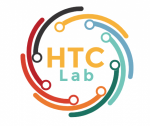Since I started my work at GWIC, there have been two major components of what I dedicate my time to. One part is assisting in streamlining data capture so that this center has a better understanding of who engages with their events. The second task is assessing their qualitative data through a quantitative lens. Data capture for them was of high priority, as they hadn’t done it before and wanted to improve this for future semesters to assess their program performance through a quantitative lens. GWIC hosts lots of events within their space like design labs, workshops and information sessions. One of their frequent events is Make-A-Thing. This event occurs every Friday. Make-A-Thing is open to all GW students who want to workshop their ideas when it comes to disciplines in engineering, design and beyond. Students have access to 3D printers, Arduino boards, and other tools within the makerspace. This weekly event is a great way to get new students to engage and learn more about the makerspace. Having data about the new students who come into Make-A-Things could possibly help GWIC target potential students better in the future. The first thing that I found necessary to better their data capture was having some sort of log-in form.
GWIC did create a log-in form when they first started holding events, but it wasn’t used consistently. I took a look at the form and found that it was relevant to their mission of understanding student breakdown. The form requests email, first name, last name, student/faculty/external visitor, school, major/minor, student organization. The questions asked are ‘Is this your first time in the space?’ and ‘Please provide a brief description of your interest in GWIC’. I went through the responses and pulled out the old data from previous sign-ups that were not organized in any particular way. I went back through their list of previous events dates and categorized the sign-ups by the event through those dates. After that, I cleared the old data so GWIC could use this form as a clean slate. We decided that for every event here on out, we would make sure to encourage those who visited the space to sign in via the form. In addition, when GWIC would go to events on campus to showcase their makerspace creations they would take sign-in sheets requesting names and emails. I would take that physical sign-up sheet and enter it manually into our contact list database. Every week I check the responses in the sign-up form, import the .xls file to our main contact list, then clear the recorded information from the form. We keep our responses current this way. The end-all goal for GWIC was to have an organized list of current students who engaged with their maker space. Using this list, they would reach out to students directly via email to keep them posted on future events at the space. Since GWIC did not have an organized system of recording participant engagement, this will help them immensely when it comes to having a list of student contacts to reach out to for future events. This method was able to help GWIC organize their student data in a way that was easily accessible.
Jasmine Sami
Human-Technology CRT, Year 1
- Social media analytics for GWIC - December 10, 2019
- Quantifying past data at GWIC - November 25, 2019
- Data capture for GWIC - November 13, 2019
